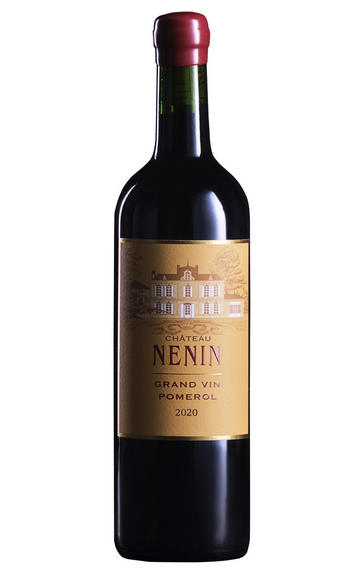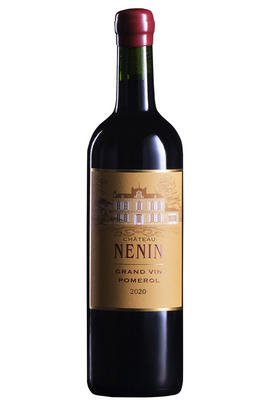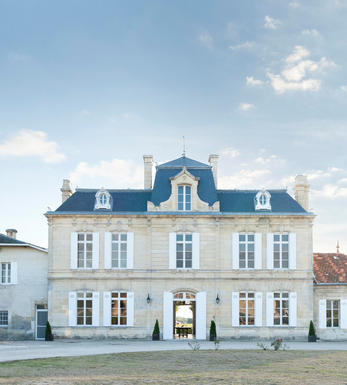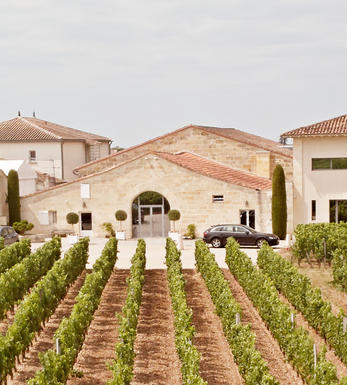
2020 Château Nenin, Pomerol, Bordeaux

Critics reviews
Drink from 2027 to 2050
Neal Martin, Vinous (May 2021)
Drink from 2028 to 2045
Antonio Galloni, Vinous (June 2021)
Drink 2026 - 2040
Jane Anson, Decanter.com (May 2021)
Drink 2025 - 2048
Lisa Perrotti-Brown MW, Wine Advocate (May 2021)
Drink 2027 - 2040
James Lawther MW, jancisrobinson.com (May 2021)
Jeb Dunnuck, jebdunnuck.com (May 2021)
About this WINE

Château Nénin
Château Nénin is a rather large property in the appellation of Pomerol on Bordeaux’s Right Bank. It’s located just outside the village of Catusseau. Jean-Hubert Delon, proprietor of Château Léoville Las Cases, long knew Château Nénin’s potential; he bought it from the Despujol family in 1997. The Delon family quickly got to work, with major investment and renovation in the vineyard and the winery – replanting a huge amount of the vineyard to best suit the soils here. Of the estate’s 32 hectares, around 25 are currently in production, planted to Merlot, Cabernet Franc and Cabernet Sauvignon. Unusually for Pomerol, most plantings are in one block, which is surrounded on two sides by Château Trotanoy. There’s also a smaller plot near Le Pin.
The Cabernet Franc here is the result of massal selection of Léoville Las Cases. The technical team here believe that this enhances the purity and elegance of the fruit. The use of new oak is relatively restrained, with experiments underway with alternative vessels including glass vats, large oak vessels and terracotta. The property benefits greatly from the Delon family’s Left Bank savoir-faire, but it remains true to its Pomerol roots. This is an ever-more precise and elegant Pomerol, with huge ageing potential and offering value for money.

Pomerol
Pomerol is the smallest of Bordeaux's major appellations, with about 150 producers and approximately 740 hectares of vineyards. It is home to many bijou domaines, many of which produce little more than 1,000 cases per annum.
Both the topography and architecture of the region is unremarkable, but the style of the wines is most individual. The finest vineyards are planted on a seam of rich clay which extends across the gently-elevated plateau of Pomerol, which runs from the north-eastern boundary of St Emilion. On the sides of the plateau, the soil becomes sandier and the wines lighter.
There is one satellite region to the immediate north, Lalande-de-Pomerol whose wines are stylistically very similar, if sometimes lacking the finesse of its neighbour. There has never been a classification of Pomerol wines.
Recommended Châteaux : Ch. Pétrus, Vieux Ch. Certan, Le Pin, Ch. L’Eglise-Clinet, Ch. La Conseillante, Ch. L’Evangile, Ch. Lafleur, Trotanoy, Ch. Nenin, Ch. Beauregard, Ch. Feytit-Clinet, Le Gay.

Merlot
The most widely planted grape in Bordeaux and a grape that has been on a relentless expansion drive throughout the world in the last decade. Merlot is adaptable to most soils and is relatively simple to cultivate. It is a vigorous naturally high yielding grape that requires savage pruning - over-cropped Merlot-based wines are dilute and bland. It is also vital to pick at optimum ripeness as Merlot can quickly lose its varietal characteristics if harvested overripe.
In St.Emilion and Pomerol it withstands the moist clay rich soils far better than Cabernet grapes, and at it best produces opulently rich, plummy clarets with succulent fruitcake-like nuances. Le Pin, Pétrus and Clinet are examples of hedonistically rich Merlot wines at their very best. It also plays a key supporting role in filling out the middle palate of the Cabernet-dominated wines of the Médoc and Graves.
Merlot is now grown in virtually all wine growing countries and is particularly successful in California, Chile and Northern Italy.


Buying options
Add to wishlist
Description
Merlot 68%, Cabernet Franc 32%
There is a modest shift away from the style of the past two decades at Nenin, a sibling of Léoville Las Cases. The aim is to accentuate more the red-fruit elements and soften some of the tannins; there is even some amphorae used. The grand vin comes solely from the best eight hectares, in the heart of the plateau. The wine is rich and full in colour, ripe with mocha, damson and something ferric. But it remains Nenin at heart and will need a while to fully express itself.
Drink 2027-2042
wine at a glance
Delivery and quality guarantee